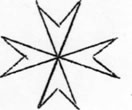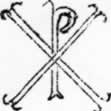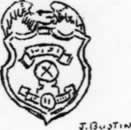
- Guardians Home
- SFFD Home
- Site Map
- Historical Review
- Apparatus
- Chiefs of Department
- Chronology
- Charles H. Ackerson
- Charles J. Brennan
- Keith P. Calden
- Andrew C. Casper
- Emmet C. Condon
- Robert L. Demmons
- John H. Dougherty
- Charles P. Duane
- Joanne M. Hayes-White
- George H. Hossefross
- Francis P. Kelly
- Frederick D. Kohler
- Joseph A. Medina
- Thomas R. Murphy
- William F. Murray
- Jeanine Nicholson
- Edward J. Phipps
- David Scannell
- Patrick H. Shaughnessy
- Albert J. Sullivan
- Dennis T. Sullivan
- Paul J. Tabacco
- Mario H. Trevino
- Edward P. Walsh
- Franklin E. R. Whitney
- Companies
- Events
- Past Events
- SFFD 150th Anniversary
- PPIE 100th Anniversary
- 1906 Expo
- 1989 Quake Party - 2009
- 65' Ladder Presentations
- Broderick & Terry Duel
- Coit Tower 75th Anniversary
- Cole Valley Fair
- Gold Hydrant - April 18th
- Jimmy's Car Show
- Lower Haight Street Fair
- Lotta's Fountain - April 18th
- Musters
- Presidio Car Show
- Station 28 75th Anniversary
- Fireboats
- Firehorses
- Firehouses
- Fires
- In The Line Of Duty
- Museum Collections
- Musters
- Notable People
- Organizations
- Gift Shop
- Volunteers
- Related Links
- Contact Us
- Research Requests
- Photo Gallery
- Videos
- Donations
| Museum Collections: Badges
"IN THIS SIGN CONQUER"
BEING A TREATISE ON The Fire Service And Its Emblems Compiled by:
"We are engaged in the service of humanity. Forepiece "Yet my attempt is not of presumption to teach (I myself having most need to be taught), but only to the intent that gentlemen that seek to know all good things , and would have an entrie into this, may not find here a thing expedient but rather a poor help thereto." Man has made use of "badges as emblems and symbols through experience extending from antiquity through the middle ages to the present day, to make known the ideals of a service and to instill loyalty to the organization and pride in its accomplishments. These badges, then, are a necessity, exerting a strange and practical power upon the wearer, as is exemplified by persons in all services rendering aid to their fellow men, "SERVICE TO HUMANITY." Each of us is familiar to some degree with the uniforms worn by the men of the United States military forces, the Army, the Navy, and the Marine Corps. Those who have had the privilege of wearing the uniform, and in many cases risking their lives for the principles for which it stands, know its significance to an extent far beyond the understanding of the average citizen. Upon these uniforms are worn the badges and insignia of the division or service, symbolizing within their compass the traditions of that particular unit or regiment. The emblems are a picture of this tradition, a glorification of patriotic deeds and heroic acts of past members that permeates the group, gives it spirit and loyalty, the "Esprit de Corps," if you will. Just as upon the uniforms of the Military, so upon the uniforms of the fire service of city governments are displayed badges and emblems symbolizing the historic traditions and background of the fire service. Emblems Paradoxically, many of the emblems that are most frequently used are not understood. Therefore, it may not be amiss to trace some of these, their symbolism and significance. A symbol is a visible sign (badge, emblem, figure), representing a quality or an object. The Flag of the United States is not only emblematic of our country, but in addition symbolizes every principle upon which the Country is founded. None of these qualities can be pictured or photographed so the symbol or emblem representing each becomes an eye picture of the characteristic which is to be indicated. Fire Service The arms and tree of this cross are of equal length; the arms and tree widening as they extend from the central point. The ends are flat or slightly curving outward, forming eight points. The true Maltese Cross is similar in shape except that the ends are indented. The Cross Pattee-Nowy, frequently referred to as a "Maltese Cross," is the insignia of the fire service in America. It symbolizes the traditions and ideals of that service - "To save life; to extinguish fire." The arms and tree of this cross are of equal length; the arms and tree widening as they extend from the central point. The ends are flat or slightly curving outward, forming eight points. The true Maltese Cross is similar in shape except that the ends are indented. To learn the inherent qualities of this Cross and the meaning of the other emblems of the fire service as well, it is necessary to go back to the middle ages, that period in history when Knighthood was in its flower - to the story of the Knights of the Crusades - when the virtues of Chivalry, Gallantry, Charity were deeds and not merely empty words. Just as those Knights of old went forth to fight a merciless foe, so do the men of the fire service go forth to face one of the most relentless enemies mankind has ever known. It is because the ideals and the traditions of the fire service are similar to the high ideals and traditions of the Knights of St. John that the cross and colors of the Knights were adopted for the fire service. This cross, white or silver upon a dark background, was first used by the Knights of St. John of Jerusalem, a charitable, non-military organization, also known as the Hospitallers, whose service was to establish hospices, hospitals, offering food and shelter to the pilgrims and medical aid to the sick and, later on, to the fighting Knights of the Crusades. Still later on they became, through force of necessity, a military order, and giving valiant assistance to the Crusaders in their effort to win back the Holy Land. Following the defeat of the Christian Armies, the Knights of St. John established their order on the Island of Rhodes, but were finally driven to the Island of Malta (153O-1798) hence the various names for both the Knights and the Cross. The Necessity for an Emblem The armor of the Knights had been developed to such an extent during the eleventh and twelfth centuries that it covered the entire body and face of the warriors, making them unrecognizable. When these knights assembled from many countries for the Crusades, speaking several different languages and being unknown to each other, they often mistook each other for the enemy. The resulting misunderstandings and quarrels frequently led to clashes between friendly Knights, with injury and death in their wake. Therefore, the Cross was devised, a sign which they easily and quickly understood, so that friend immediately recognized friend. Why the Emblem of the Cross? Because the Knights were fighting under the banner of Christianity, for a holy cause, of which the cross of Calvary was the symbol, they adopted a cross as the sign of identification. This cross was later called the "Maltese" cross, denoting a Christian soldier and a friend, and establishing unity of action and fraternity of sentiment. This cross was also adopted by the Teutonic Knights and the Knights Templars, representing, even though varied in color and background, the same principles of Charity, Gallantry, Protection of the Weak, Generosity to Friend and Foe, Dexterity in Service, Loyalty, Chivalry and Friendship.
The Origin of the Cross Evidence of the use of the cross as a symbol can be found in the oldest of civilizations. Some of this symbolism may be traced to the crossing of sticks of wood in starting a fire. Long before Christ walked on this earth, the cross was used as an instrument of capital punishment, as is recorded in the histories of the ancient civilizations of the Persians and Egyptians. In the Roman Empire, punishment by death on the cross was considered so dishonorable that no Roman citizen was permitted to suffer it. The cross was despised, an instrument of torture, a thing to dread and hate. The death of the Savior on the cross converted the cross into the Holy Tree of Salvation. From the day that the miraculous Laborum "In This Sign Conquer" led the first Christian Emperor Constantine {272 A.D. to 337 A.D.) to victory, the cross was no longer the badge of shame, but the standard of glory. Its use spread through the Christian world. This was the emblem of the Knights. Knights as Fire Fighters While none of the Knights went to the Holy Land as firemen, nevertheless, before their return home, many were to become thoroughly seasoned fire fighters, as we shall see. The outstanding weapon used by the Saracens for the protection of the walled cities were glass bombs containing naphtha. These were hurled over the enclosing walls of a besieged city upon the attacking Knights, saturating them with this highly flammable liquid. Then to set it afire, a flaming tree was hurled over the wall, igniting the naphtha. Hundreds of Knights perished in the flames. Others desperately fought to rescue their brother Knights and to extinguish the flames which were destroying their catapults and other engines of war.
Other bombs, canisters containing Greek fire, were hurled into the Christian camps. The force of the burning contents caused the bombs to whirl and move about igniting and destroying everything flammable with which they came into contact. Crafty as the enemies were on land, they were just as clever on the sea. They employed war vessels, known as pyrophores on the forward decks of which were large metal lion heads which belched fire of naphtha, rosin, sulphur and flaming oil. Their system of attack was to sail the vessel into the midship section of a Christian vessel, setting it afire. These methods of waging war with fiery weapons were as yet unknown to Europeans. The Knights were fighting an extremely clever, ruthless enemy, in a strange country and sea, using man's most merciless foe, fire, as their servant. One experienced in fire fighting may very easily envision the scenes resulting from such horrifying warfare, and the courage and faith necessary to cope with such an adversary. In some of these battles, as also at fires, certain men would distinguish themselves by heroic deeds. In recognition of these deeds, the cross worn by such knights was decorated with floral designs, and its shape varied, according to the deed performed. This accounts for the variations from the originally adopted cross. When thus inscribed with flotation or other ornamentation, it was considered the most honorable cross in' heraldry. Other insignia of the Fire Service Invariably, heraldic bearings picture an outstanding ideal on the part of the wearer, or the service of an organization of which he is a part. The shield worn by the Knights was protective armor. The history of heraldry tells us that a shield upon a coat-of-arms implies a "Defender". Thus, we find that badges of the Fire Service are in many cases (and should be in every case) in the form of a shield containing the emblem of the Cross Pattee-Nowy either upon the shield or crest. Just as the shield worn by the Knights was protective armor, serving to guard the wearer from the swords and arrows of the enemy, it also offered protection to the Knights on either side of him, as well as for the people and purpose for whom they fought. It was protective armor, a shield against an enemy. Likewise, the fire service is a protective armor, a defender for those in need of protection from fire, a guard for those whose lives are in danger, a shield against man's merciless enemy - fire.
Border Among the decorations usually found upon fire badges is a rope or cord forming a border. The rope or cord border is unbroken, emblematic of unbroken service and loyalty.
The crossed arms, axes, ladders, etc. of the Crusaders, in the form of the "Saltier" or "St. Andrew's Cross" are symbolic of resolution and a reward of such as have scaled the walls of cities - a decoration reserved for "The Bravest." The crossed scaling ladders denoted one who was fearless in attacking, meaning the - "Extremely Brave." Hence, to the present day we find upon uniforms of the military crossed swords, crossed guns, etc., and upon the badges of fire chiefs the crossed speaking trumpets, embodying the cross plus the insignia of rank or the particular kind of service. Upon the lapels, breast or sleeve of the soldier, signs of previous engagements, wars, or activities are shown. These decorations possess an intrinsic value that cannot be measured in terms of cash. Money cannot buy true honors - they must be earned.
Phoenix The emblem of the Phoenix (not to be confused with the eagle) which is found upon helmets or fire hats, badges, flags and seals of fire departments was used by the early Christians as a symbol of the resurrection of Christ. To them it also symbolized the pledge of eternal life. It was also used as a sign of friendship, a secret sign of recognition by which each Christian knew the other. Since then, in modern times, the Phoenix has become the emblem of a city destroyed by fire and, being reborn, structurally resurrected more beautiful than ever before. The Phoenix is also symbolic of the Fire Service. Legend has it that this bird, about the size of an eagle, lived at the time of Adam and Eve and did not eat of the forbidden fruit, as all other birds did. As a reward for his loyalty, he will live forever. When he senses old age approaching, he builds a nest of fagots, setting it afire with friction caused by the flapping of his wings. During the fire he is renewed in youth and strength - rising from the ashes more beautiful than ever before. The head of the Phoenix is finely crested with beautiful golden plumage; his neck, golden colored feathers; tail, white; body, purple or crimson.
Eagle The eagle, king in his own domain, lives a dignified existence, does not meddle in the ordinary affairs of bird life, but does at times administer severe punishment by use of his beak or talons. Lofty in position, majestic in flight, dauntless in courage, he is admired by man. Hence, we find him represented on the shields and crests of executive officers only, those who have authority to administer discipline. The Eagle is usually displayed surmounting the shield, with wings extended, signifying that the wearer is a man of authority, one occupied in high and weighty affairs, of lofty spirit, ingenuous, and judicious in matters of ambiguity. The extended wings, like the arms of the cross, signify protection and charity; the beak and the exposed talons, the enforcement of discipline.
Colors Colors, too, were used as symbols of certain qualities in heraldry. The Knights of St. John used the silver cross on a dark background; the Knight Templars a red cross upon a white background; the Teutonic Knights a black cross upon a white background, etc. Blue signifies sincerity of purpose, loyalty and truth.
Officers The badge, crest, and front piece of the helmet in the form of a shield, indicating a "defender"; it is a mark of identification; its colors indicate a particular kind of service. "Gold and White" indicate a Chief "White and 11. Black an officer below the rank of Chief; "Black, with white lettering", a hoseman or truckman; the "Trumpets" upon the badge denote the particular rank; one silver trumpet denotes a lieutenant; two silver trumpets a captain; two gold trumpets, crossed, battalion chief; and so on, to the fir© crossed trumpets of the Chief Engineer. ----0000OOOO0000---- Too frequently, firemen, being a part of the picture, lose sight of the true meaning of the Fire Service. To them, the unremitting labor, devotion to service, daily acts of heroism, spectacular as they are to the general public, become a matter of fact, an ordinary thing. These are the men, in every city and hamlet, from the largest metropolitan areas to the volunteers in the nation's smallest village, who by their spirit, tradition and deeds preserve their cities and people from the world's greatest menace. To the community they represent order, discipline, service, loyalty. Many members of the fire service have been called upon the past to make the supreme sacrifice in the public's interest. Loyal to the ideal of the service, they gave their life in the fulfillment of their duty. They had learned that there was something more to life than merely living, and that was "Duty and Service to their Fellow Man." The fraternity of firemen is a comradeship of long traditions, cherished not only because of its skill, but also because of its enduring spirit of loyal service. Men who have faced death and peril together have consummated a peculiar and sacred comradeship. No man can have a finer fellowship than association with such men, men welded together in the fire of selfless loyalty. This is the tradition upon which is formed the organization of the Fire Service, unique and unshared by any other group, as symbolized by the Cross Pattee-Nowy. The Spartan Oath "We will never bring disgrace to this our city by any act of cowardice or dishonesty; Bibliography ---000OOOOOO000--- |


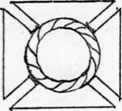
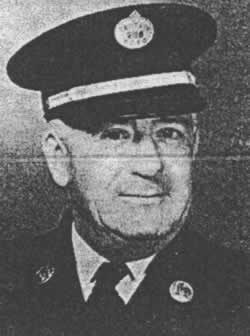
 The Cross Pattee-Nowy, frequently referred to as a "Maltese Cross," is the insignia of the fire service in America. It symbolizes the traditions and ideals of that service - "To save life; to extinguish fire."
The Cross Pattee-Nowy, frequently referred to as a "Maltese Cross," is the insignia of the fire service in America. It symbolizes the traditions and ideals of that service - "To save life; to extinguish fire." The Cross Pattee-Nowy, with its wide extended arms, symbolizes the open wings of a bird covering and protecting her young ones. Hence, it portrays the protecting power of the cross and, as used originally, belongs to the Christian Knights who shielded the weak. Just as it fittingly pictured the protecting power of the Knights, so as an emblem of the fire service, it signifies the protecting power of the men of the fire service.
The Cross Pattee-Nowy, with its wide extended arms, symbolizes the open wings of a bird covering and protecting her young ones. Hence, it portrays the protecting power of the cross and, as used originally, belongs to the Christian Knights who shielded the weak. Just as it fittingly pictured the protecting power of the Knights, so as an emblem of the fire service, it signifies the protecting power of the men of the fire service.